After months of contemplating the idea of building a pole barn, you’re finally committed to taking the next step in your post frame project. There are multiple factors to consider, from finding the perfect builder and lender to the fine details such as site preparation and exterior features.
The process may seem daunting at times, especially if you’re new to post frame construction. To ease your mind, we’ve put together the ultimate guide to pole barn costs. You’ll be building with confidence in no time.
When is the Best Time to Purchase a Pole Barn?
First, you’re probably wondering when is the best time of the year for you to begin your pole barn project?
Each season has its advantages that makes its case for the right time to purchase your pole barn. Some seasonal benefits include:
Spring/Winter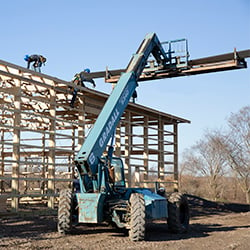
- Lower building prices. Commodity prices for steel and lumber are historically lower. This allows for more economical pricing compared to the rest of the year.
- Start construction faster. Typically, builders start the new year with a lower backlog. This provides flexibility to get on site quicker and meet your building time frame.
- Higher personalized experience. Fewer construction projects are built during the first five months of the year. This means that your Project Manager will have more time to focus on your project.
Summer/Fall
 Site prep. The mild weather enables sites to be easily prepped, allowing for quicker crew mobilization. With less rain compared to the spring, construction start dates are more predictable.
Site prep. The mild weather enables sites to be easily prepped, allowing for quicker crew mobilization. With less rain compared to the spring, construction start dates are more predictable.- Concrete finish. The warm weather allows concrete to be poured without having to wait for the ground to thaw.
- Predictable weather. With anticipated temperatures, crews are less likely to be pulled off a construction site. This will keep your project on schedule.
Designing Your Building
The fun part about construction is bringing your dreams to life through the design your building. The beauty of post frame is its flexible design to fit all of your needs. The four most common types of post frame construction are:
Agricultural Buildings
Protect your big machinery and equipment with a spacious storage building. Keep your farm running with a durable farm shop. Get the best of both worlds with a multi-purpose building. Want more space for a lower cost? Open-sided buildings are a work-friendly and cost-friendly option for you to consider. Take a look at our top five floor plans (designed by farmers) for inspiration.
Residential Buildings
Keep your tools in tip-top shape by storing them in a sturdy tool shed. During the harsh winter months, house your boat, RV, or ATV in an insulated garage or storage building. Showcase your antique car collection inside an attractive hobby shop. Further explore these options to determine which type of residential building best fits your needs.
Commercial Buildings
From retail and warehouses to municipals and dealerships, post frame construction is an ideal solution for many business owners and land developers. Why? Post frame buildings provide design flexibility, go up quickly, and are energy efficient. Also, you can add attractive exterior features and finishes to increase foot traffic.
Equine Buildings
As a horse owner, you have a good idea as to what you’re looking for in an equine facility. First are the simple necessities such as stalls and tack room. Build out your design to include an indoor arena and living quarters. Need help spurring your imagination? No worries, we rounded up our top five equine facilities that are built to last with beauty, comfort, and strength in mind.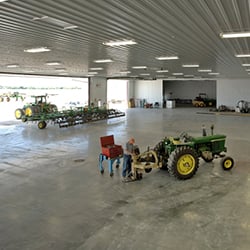
Once you’ve selected a building design, dig a little deeper and ask yourself the following questions:
- What is your desired building size? Does the building size meet your needs?
- If your budget is being stretched, do you plan to add on to your building in the future?
- What type of external features do you want to include?
- Do you know how you want to finish the interior of the building?
- Does the flow of the building maximize your use and lower operating costs?
Overall, these design factors will impact your total pole barn cost.
Selecting the Right Pole Barn Builder
If you want to construct a pole barn or post frame building, you’ll need to hire a professional builder. Sure, you can Google “best pole barn builders near me.” But how do you know which pole barn builder to choose?
The search results will most likely feature multiple post frame construction companies that each claim high-quality buildings with numerous years of experience. This may leave you feeling uncertain on how to make an important decision with so many options.
As you research the web search queries, ask yourself the following questions:
- What is the company’s building process?

Each pole barn builder has their own building process. We recommend reaching out to your preferred contractor and discussing their building timeline. Does it align with your envisioned time frame?
From processing and permitting to pre-mobilization and construction, you’ll want to make sure all parties involved are on the same page. Trust us, you do not want any surprises (or headaches) this early in the game.
- How long will it take to complete my building project?
The first determining factor is the builder’s backlog. You’ll want a builder with the crew power to get on site within a reasonable timeframe. Depending on the time of the year, this can range from one to three months.
However, you might find a builder with no backlog and can be at your location in a couple of weeks. Please exercise caution in this situation. Typically, a builder with a low backlog has one for a reason, which may cause future problems during construction.
Second, you’ll want to consider your builder’s crew power, which varies on the size of your building project. For smaller suburban buildings, crews with 3-4 men maximize time and efficiency. For larger agricultural or commercial buildings, crews with 4-10 men ensure effective building practices and help complete your project on time.
- Are the construction crews directly employed or subcontracted by a third party?
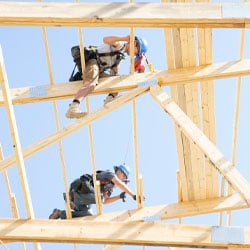
If you hire a builder that subcontracts their crew, beware of issues like job jumping or material delivery delays. This can cause problems with scheduling. Builders who invest in their field employees do so because direct accountability is the best way to ensure quality performance.
- Does the Sales Consultant serve as the Project Manager?
While a knowledgable sales associate brings tremendous value to your building project, it is important to have a dedicated project manager to facilitate the construction process. This takes the pressure off you to hold the crew accountable and on schedule.
- What does the company’s warranty package include?
It is important to note that there’s no standard warranty in the post frame industry. With that being said, you do not want to skim through builder warranties. Be sure to discuss these top five warranty essentials with your Project Sales Consultant for a better understanding.
- How do they handle building damage after construction?
Any product that is left outside in the elements and being used every single day is at risk of being damaged. Make sure your builder has a repair and renovation crew ready to handle these situations. It can be difficult for a builder to send a new construction crew to perform repair work. This can leave you waiting for months on a simple repair project.
- What do past customers have to say about the company?
Nowadays, consumers are quick to run to the internet and social media for product reviews and recommendations. Perform a quick web search (Google or Yelp) to see what previous customers are saying about your future builder. Is it mostly positive or negative feedback? Keep those comments in mind when selecting a post frame company.
- Are they a quality builder?

Perhaps the most important question. If you’re going to spend your hard-earned money on a new pole barn, then you’ll want to make sure you’re investing in a quality builder — one whose building materials and features will withstand the test of time.
The post frame industry has numerous companies, each with their own strengths and weaknesses. When it comes to picking the highest quality builder, the old adage is true — “you get what you pay for”.
We recommend taking the time to compare the materials used by each construction company. Also, you’ll want to understand why prices may fluctuate and what goes into those numbers. Don’t take a sales representative’s word for it. Instead, dig into the specifications to truly understand what you’re getting.
Educate yourself using the free literature offered by companies that detail their products. If a builder doesn’t provide you with product literature, then that should tell you something about their quality.
- Will the construction company be around in 20 years?
As mentioned above, warranties and quality products are very important. But if there’s no company left to stand behind the claims, then they’re empty promises.
Be sure to choose a builder that’s been in the construction industry for at least 20 to 30 years. This longevity shows that they can handle the swings of an ever-changing environment and economy. Having a builder that’ll be there for repairs or future additions will bring a much-needed peace of mind to your building investment.
To make this phase easier, we compiled a list of our top recommendations for the best pole barn builders in the Midwest.
Financing Your Pole Barn
Before we explore further costs, you need to determine how you’re going to pay for your pole barn. In a perfect world, you’d have the cash on hand to fully fund your dream building. However, this may not be the case, and you’ll have to take out a loan.
Be sure to check with your post frame builder to see if they have special financing offers. Next, ask your builder if they have a list of lenders for you to contact.
Once that is complete, contact your builder for a pole barn quote and start turning your dream into a reality.
Permitting Costs
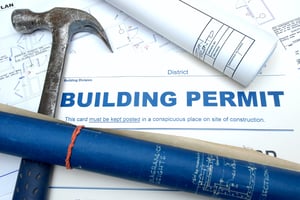 You’ll need to sit down and determine what type of permits you’ll need to move forward with your construction project. Permitting costs are based on the following factors:
You’ll need to sit down and determine what type of permits you’ll need to move forward with your construction project. Permitting costs are based on the following factors:
- Building Size (square footage)
- Building Segment (Agricultural, Residential, Commercial, or Equine)
- Jurisdiction (state or county)
*Please note that the information below are averages to help with your planning. Costs may vary.
Agricultural Buildings
Depending on your building design and size, permits for farm buildings range from $0 to $2,000. Some counties exempt agricultural building permits. However, you’ll still need to get a permit (free of charge) before building. Contact your county’s Planning & Development office to see if your pole barn is exempt.
Residential Buildings
While factoring in building design and size, permits for residential buildings can cost anywhere from $50 to $1,000. If you live in an urban area, you may have to obtain a permit from the town rather than the county. The best way to find out is to contact your city hall or county courthouse.
Commercial Buildings
It’s important to mention that the commercial permitting process varies from state to state. Some states require commercial projects to obtain a permit through the state they’re building in. Meanwhile, others request one from the local level.
Permits for commercial buildings range from $1,000 to $100,000. A large portion of these costs are due to commercial projects requiring Mechanical Electrical Plumbing plans (MEPs), architectural drawings, civil site drawings, and the state’s stamp of approval.
If you choose a builder who has a licensed engineer on staff, your permitting costs will lean towards the lower end of the spectrum. On the other hand, if your preferred builder doesn’t have a licensed engineer on staff, your permitting costs will be towards the higher end.
Equine Buildings
Depending on the scope of your project, permits for horse barns can cost anywhere from $50 to $3,000. This wide range is based on the fact that equine buildings can be viewed as agricultural, personal, or commercial-use buildings.
In conclusion, the cost of your permits will depend on your building size, building segment, and jurisdiction. We recommend working with an experienced builder who can help guide you in the right direction. In some cases, the builder will help pull the permit for you.
Site Costs
Once you’ve obtained the correct permits, you need to consider the cost of preparing your building site. We define site preparation as the work done on your land prior to construction. This process allows you to identify and address site complications upfront before construction begins. The following factors drive site costs:
- Location and elevation
- Type of granular fill
- Building pad size
- Amount of object removal
As a result, some projects will require more site prep than others, affecting the cost. Below are the typical site costs for the following building segments:
|
Agricultural |
$1,000 to $30,000 |
|
Residential |
$500 to $5,000 |
|
Commercial |
$1,000 to $50,000 |
|
Equine |
$500 to $20,000 |
*Please note that the information above are averages to help with your planning. Costs may vary by project size.
Investing in proper site preparation will extend your building’s lifetime and reduce total project construction costs. You can further save on costs if you own the equipment and plan on doing your own excavation.
Feeling overwhelmed? We created a simple guidebook that will provide you with helpful insights in preparing your building site. Also, we recommend working with a post frame builder who will:
- Facilitate the ideal site layout and building location
- Help design a building that works for your site
- Consider the implication of total project costs
- Recruit an excavator and engineer
- And take the lead during the permitting process
Proper site preparation will save you time and enhance your building quality by allowing a seamless construction area for men and materials to move and work.
Finishing Costs
As we mentioned previously, adding external and internal features will affect your total pole barn cost.
First, it is important to check with your pole barn builder to define their scope of work. Some post frame builders will have the following external and internal work subcontracted out:- Masonry
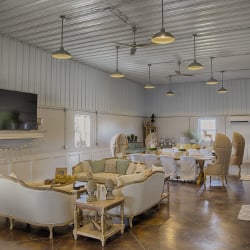
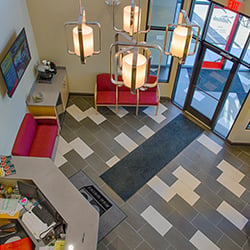
- Framing
- Electrical
- HVAC
- Plumbing
- Drywall
- Trim
- Carpet
- Cabinets
- Concrete
- Overhead doors
Furnishing, Landscaping, & Signage Costs
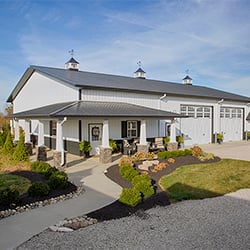 Typically, extras such as furnishing, landscaping, and signage tend to be out of sight, out of mind in the early stages of the building process. Yet, these finishing touches make your building unique.
Typically, extras such as furnishing, landscaping, and signage tend to be out of sight, out of mind in the early stages of the building process. Yet, these finishing touches make your building unique.
Spruce up the perimeter around your pole barn with well-designed, energy-efficient landscaping. Stay off the fresh cut grass with a sidewalk. Pave the driveway leading up to your newly built post frame project. Please keep in mind that some commercial buildings require these add-ons.
At the end of the day, these extra features will add value to your project.
Cost Breakdown
After taking the different factors into account, the rough percentage breakdown of an average post frame project will be:
- Building Shell: 40% (20% for Commercial)
A higher percentage for farm shops and cold storage buildings.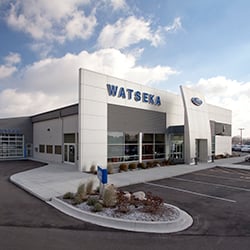
- Finishing: 25% (45% for Commercial)
A higher percentage for commercial, retail, or office spaces, as well as finished suburban buildings.
- Concrete: 20% (15% for Commercial)
A higher percentage for larger storage buildings, or if you’re wanting a thicker finish.
- Site Prep: 14% (15% for Commercial)
This percentage depends on your building size and site condition.
- Permit: 1% (5% for Commercial)
This percentage depends on the type of building. The percentage is higher for commercial projects.
Please note that the above percentages will vary based on a variety of factors. For example: in-floor heating within concrete, special overhead doors, unique building features, and extensive site preparation. If you don’t plan to finish out your building, the interior portion of the finishing percentage will be greatly reduced.
Again, these examples will alter the listed percentages. However, these percentages will give you a starting point for your budget.
Are You Ready to Get Started?
As you can see, there are multiple factors to consider when determining the cost of your pole barn. There is no black and white square foot number that works for everyone. To get a total project cost, you have to start with step one and work your way forward. Ultimately, how you choose to design your building is up to you. Your builder should walk you through each one of the steps listed above to help get your project started, stay on schedule, and under budget.
If you're ready to get started and take the next steps with your building project, give us a call at (800) 552-2981 or reach us online to determine your pole barn estimate.
If you're looking for more information, we also recommend reading How Fast & Accurate is Your Cost Estimate Validation Process? Project owners know the value of an accurate estimate. The total cost of a project can make or break a capital spending decision.





